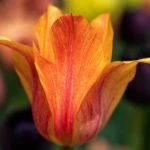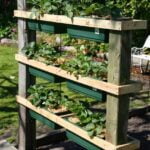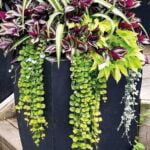Welcome to North Carolina, where stunning landscapes abound and offer endless opportunities for creating beautiful outdoor spaces. Whether you’re looking to enhance your property with native plants, coastal design elements, or a mountain retreat, the diverse terrain of North Carolina provides a rich tapestry for landscaping ideas.
In this article, we’ll explore various North Carolina landscape ideas that highlight the state’s natural beauty and showcase different garden designs that thrive in its climate, including sustainable and historic landscapes. If you’re seeking inspiration for your outdoor space, look no further than the picturesque landscapes of North Carolina.
One of the key aspects of creating a captivating landscape in North Carolina is incorporating indigenous flora into your design. From the rolling hills of the Piedmont to the sweeping coastline and majestic mountains, the state’s native plants offer an array of color, texture, and interest that can enhance any outdoor space. We’ll delve into how to spotlight these unique plant species and create a landscape that reflects the natural beauty of North Carolina.
For those living along the coast, incorporating elements of beach and coastal design can bring a touch of seaside charm to your landscape. On the other hand, residents living amidst the scenic mountains can draw inspiration from their surroundings to create a tranquil mountain retreat right in their backyard. No matter where you are in North Carolynina, there are fantastic landscaping ideas waiting to be explored.
Native Plants
North Carolina is home to a diverse range of native plants, each offering unique beauty and adaptability to the state’s climate. By incorporating these indigenous flora into your landscape, you can create a stunning and sustainable outdoor space that reflects the natural beauty of North Carolina.
Benefits of Using Native Plants
One of the main advantages of using native plants in your landscape design is their ability to thrive in North Carolina’s climate without requiring excessive maintenance. These plants have adapted to the local soil, moisture levels, and weather patterns, making them more resistant to pests and diseases. Additionally, native plants are crucial for supporting local wildlife, providing food and habitat for birds, butterflies, and other beneficial creatures.
Designing With Native Plants
When incorporating native plants into your landscape, consider creating a naturalistic arrangement that mimics the local ecosystems found throughout North Carolina. Utilize a variety of plant heights, colors, and textures to create visual interest while maintaining a sense of cohesion. You can also group plants based on their water and sunlight needs to ensure they thrive in their designated areas.
Popular Native Plants in North Carolina
Some popular native plant options for North Carolina landscapes include Eastern Redbud (Cercis canadensis), Cardinal Flower (Lobelia cardinalis), Coreopsis (Coreopsis spp. ), Black-eyed Susan (Rudbeckia hirta), and American Beautyberry (Callicarpa americana).
These plants offer vibrant blooms, attract pollinators, and contribute to the overall beauty of your landscape while staying true to the natural heritage of North Carolina. Incorporating these native plants will not only enhance the visual appeal of your outdoor space but also contribute to the preservation of North Carolina’s indigenous flora.
Coastal Design
When it comes to landscaping in North Carolina, the coastal design is a popular choice for many homeowners looking to bring a touch of the beach and coastline into their outdoor spaces. Here are some ideas and tips for creating a coastal-inspired landscape that captures the essence of North Carolina’s beautiful coastal regions:
1. Embrace native coastal plants: Incorporate indigenous coastal plants such as Sea Oats, Beach Sunflower, and Seashore Mallow into your landscape to add natural beauty and resilience to your outdoor space.
2. Create a beach-inspired retreat: Consider adding elements like sand dunes, driftwood, and seashells to mimic the feel of the beach in your landscape design. This can be achieved through strategically placed pathways or seating areas that evoke a sense of being near the coast.
3. Utilize water features: Whether it’s a small pond or a fountain, integrating water features into your coastal landscape can help create a tranquil and soothing environment reminiscent of the ocean waves crashing on the shore.
4. Install Coastal-inspired hardscapes: Incorporate materials like weathered wood, natural stone, and gravel to bring elements of the coastline into your hardscaping design. These materials can be used for pathways, patios, or even decorative accents around your outdoor space.
5. Opt for sustainable coastal landscaping practices: Choose drought-resistant plants and utilize mulch to conserve water in your coastal landscape design. Additionally, consider using permeable paving materials to reduce stormwater runoff and preserve the health of North Carolina’s delicate coastal ecosystems.
By implementing these coastal design ideas into your North Carolina landscape, you can create an outdoor oasis that beautifully captures the essence of the state’s stunning coastal regions while promoting sustainability and native plant conservation.
Mountain Retreat
North Carolina’s diverse landscape offers a unique opportunity to create a mountain-inspired retreat right in your backyard. Whether you’re drawn to the majestic beauty of the Blue Ridge Mountains or the peaceful tranquility of the Great Smoky Mountains, there are several design elements you can incorporate to bring the essence of these mountain ranges into your landscape.
To create a mountain retreat in North Carolina, consider incorporating the following elements:
- Native plants: Choose indigenous flora such as Virginia Sweetspire, Mountain laurel, and Eastern Redbud to mimic the natural vegetation found in the mountains.
- Rock features: Integrate rock formations, boulders, and stone pathways to emulate the rugged terrain of North Carolina’s mountain landscapes.
- Elevation changes: Utilize terraced gardens or raised planting beds to mimic the varying elevations found in mountainous regions.
- Water features: Incorporate natural-looking streams, cascading waterfalls, or a tranquil pond to evoke the feeling of a serene mountain oasis.
When designing a mountain-inspired landscape in North Carolina, it’s important to consider factors such as soil type, sun exposure, and precipitation levels. By carefully planning and implementing these design elements, you can create a picturesque mountain retreat right in your own backyard.
In addition to creating a visually stunning landscape, integrating these elements into your outdoor space will also contribute to sustainability and support local ecosystems. When working with a professional landscaper or designer who is familiar with North Carolina’s climate and native plants, you can ensure that your mountain retreat remains beautiful and thriving for years to come.
Garden Inspiration
When it comes to garden inspiration and design ideas, North Carolina offers a diverse range of possibilities that thrive in its unique climate. With its mix of temperate and subtropical weather, homeowners and landscape designers have the opportunity to create stunning gardens that flourish year-round. From vibrant floral displays to lush greenery, the state’s climate provides an ideal setting for various garden styles.
One of the most popular garden designs in North Carolina is the Southern Garden, which typically features a mix of classic southern plants such as azaleas, camellias, and magnolias. These plants not only thrive in North Carolina’s climate but also add a timeless charm to any landscape. Additionally, incorporating traditional southern elements such as winding pathways, decorative wrought iron accents, and elegant garden furniture can enhance the overall aesthetic of the space.
For those looking for a low-maintenance garden option in North Carolina, native plant landscapes are an excellent choice. Utilizing indigenous flora not only benefits the local ecosystem but also requires minimal maintenance once established. Plants such as Eastern Redbuds, Black-eyed Susans, and River Birches are just a few examples of native flora that can contribute to a beautiful and sustainable garden design in North Carolina.
Another garden inspiration for North Carolina landscapes is the cottage garden style. This design often includes an abundance of colorful flowers arranged in a naturalistic manner alongside pathways or borders. This charming and romantic approach to gardening is well-suited for North Carolina’s mild climate and provides an inviting atmosphere for both residents and wildlife.
| Garden Design | Featured Plants |
|---|---|
| Southern Garden | Azaleas, Camellias, Magnolias |
| Native Plant Landscape | Eastern Redbuds, Black-eyed Susans, River Birches |
| Cottage Garden | A variety of colorful flowers arranged naturally |
Water Features
When it comes to creating a stunning landscape in North Carolina, incorporating water features can add an extra touch of beauty and tranquility. North Carolina’s diverse landscapes provide the perfect backdrop for waterfalls, ponds, and fountains that can enhance the overall aesthetic of your outdoor space. From the coastal regions to the mountains, there are endless possibilities for integrating water features into your landscape design.
Waterfalls are a popular choice for many North Carolina landscapes, with their soothing sights and sounds creating a peaceful atmosphere. Whether you have a small backyard or extensive property, there are various types and styles of waterfalls that can be tailored to your specific space.
Ponds also offer an opportunity to introduce aquatic plants and wildlife into your landscape, adding a natural and serene element to your outdoor environment. The addition of fountains can bring an elegant touch to any landscape, whether it’s a classic tiered fountain or a modern sculptural piece.
Incorporating water features into your North Carolina landscape not only adds visual appeal but also provides practical benefits such as attracting wildlife, promoting relaxation, and masking unwanted noise. Whether you’re drawn to the coastal charm or mountain serenity of North Carolina, consider how water features can elevate the beauty of your outdoor space.
| Water Feature | Description |
|---|---|
| Waterfalls | Create peaceful atmosphere with soothing sights and sounds |
| Ponds | Add natural and serene element with aquatic plants and wildlife |
| Fountains | Bring elegant touch to any landscape with various styles available |
Sustainable Landscaping
When it comes to creating a sustainable and eco-friendly landscape in North Carolina, there are several tips and practices that can help you achieve your goal. One of the most important aspects of sustainable landscaping is the use of native plants.
By incorporating indigenous flora into your landscape design, not only are you supporting the local ecosystem, but you are also reducing the need for excessive watering and maintenance. Native plants such as Black-eyed Susans, Coneflowers, and Eastern Redbuds are not only beautiful but also well-adapted to North Carolina’s climate.
In addition to using native plants, another key element of sustainable landscaping in North Carolina is water conservation. The state experiences periods of drought, making it essential to implement water-saving techniques in your landscape design. Consider installing rain barrels to collect water for irrigation or incorporating drought-resistant plants that require minimal watering. Furthermore, using permeable paving materials for walkways and driveways can help reduce runoff and promote groundwater recharge.
Furthermore, when planning a sustainable landscape in North Carolina, it is important to prioritize soil health. By utilizing compost and organic mulch, you can improve soil fertility and structure while reducing the need for chemical fertilizers.
Additionally, integrating edible plants into your landscape not only adds aesthetic value but also provides a source of homegrown produce. Implementing these sustainable practices will not only benefit the environment but also result in a low-maintenance landscape that thrives in North Carolina’s unique climate.
With these tips and strategies for creating an eco-friendly and low-maintenance landscape in North Carolina, you can enjoy a beautiful outdoor space while minimizing environmental impact. From utilizing native plants to conserving water and prioritizing soil health, sustainable landscaping offers numerous benefits for both homeowners and the local ecosystem.
Whether you’re designing a residential garden or commercial property, embracing sustainability in your landscape design can contribute to the overall beauty and resilience of North Carolina’s natural landscapes.
Historic Landscapes
North Carolina has a rich history that is reflected in its diverse landscapes. When designing your landscape, incorporating elements of the state’s heritage can add a unique and personal touch to your outdoor space. From colonial influences to Civil War sites, there are countless ways to honor North Carolina’s past in your landscape design.
Colonial Influence
One way to incorporate elements of North Carolina’s colonial history is by using traditional English garden designs. These gardens often feature symmetrical layouts, geometric shapes, and densely planted flower beds. Consider adding brick pathways, box hedges, and formal topiaries to evoke the feel of a historic English garden in your own backyard.
Civil War Sites
For those interested in honoring North Carolina’s Civil War history, consider creating a memorial garden or incorporating elements such as stone walls, iron gates, and antique weaponry into your landscape design. You can also plant native shrubs and flowers that would have been found in the region during the time of the Civil War, such as dogwoods or azaleas.
Native American Heritage
Another aspect of North Carolina’s rich history that can be reflected in your landscape design is the state’s Native American heritage. Consider adding features such as a traditional labyrinth walk inspired by indigenous cultures or planting crops that were historically grown by Native American tribes in the region. By incorporating these elements, you can pay homage to the indigenous people who once called this land home.
By drawing inspiration from North Carolina’s rich history, you can create a landscape design that not only reflects the natural beauty of the state but also honors its diverse cultural heritage. Whether it’s through traditional English gardens, Civil War memorials, or Native American-inspired features, there are endless ways to incorporate elements of North Carolina’s past into your landscape design.
Conclusion
In conclusion, the landscapes of North Carolina offer a breathtaking array of possibilities for those looking to transform their outdoor spaces. Whether you’re drawn to the native plants that thrive in this region, inspired by the coastal beauty, or yearning for a mountain retreat, North Carolina has it all. The diverse landscapes of this state provide endless opportunities for creating stunning and unique outdoor environments.
One of the most enchanting aspects of landscaping in North Carolina is its rich history and natural beauty which presents numerous opportunities to incorporate historical elements into your design. Furthermore, the sustainable landscaping tips discussed earlier ensure that your outdoor space not only looks beautiful but also respects and protects the natural environment.
Whatever your inspiration may be, North Carolina’s landscape ideas are as varied as they are beautiful. From incorporating water features like ponds and fountains to showcasing different gardening designs that thrive in this climate, the options are endless.
With creativity and careful planning, anyone can create an outdoor oasis that captures the essence of North Carolina’s diverse and stunning landscapes. Whether you’re a resident or just visiting, these landscape ideas are sure to captivate anyone seeking to enhance their outdoor space within this picturesque state.
Frequently Asked Questions
What Plants Are Native to NC Landscaping?
North Carolina is home to a variety of native plants that are well-suited for landscaping. Some common native plants include American beautyberry, black-eyed Susan, butterfly weed, cardinal flower, and eastern red cedar. These plants can thrive in the state’s climate and soil conditions, making them an excellent choice for NC landscaping projects.
What Is the Coastal Landscapes Initiative NC?
The Coastal Landscapes Initiative in North Carolina is a program aimed at promoting sustainable and resilient landscaping practices in the coastal region of the state. This initiative encourages the use of native plants, rain gardens, living shorelines, and other environmentally-friendly landscaping techniques to protect the natural ecosystems and combat issues such as erosion and water pollution.
How Do I Style My Front Yard for Landscaping?
Styling your front yard for landscaping involves several key steps. First, consider the overall design and layout of your yard, taking into account factors such as sunlight, soil type, and existing features like trees or slopes. Then choose appropriate plants that will thrive in your specific conditions while also complementing the style of your home and yard.
Consider adding hardscaping elements like pathways or decorative rocks to add visual interest. Finally, regular maintenance is important to keep your front yard looking its best – this includes watering, weeding, pruning, and fertilizing as needed.

Welcome to my gardening blog! I am passionate about plants and enjoy sharing my knowledge and experiences with others. In this blog, I will write about everything related to gardening, from tips on how to get started to updates on my own garden projects.





